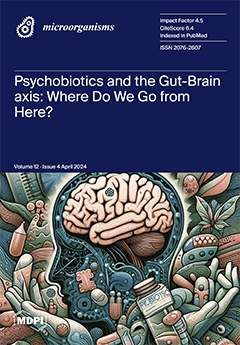The worldwide reduction in the use of antibiotics in animal feed is fueling the need for alternatives for the prevention and control of poultry intestinal diseases such as necrotic enteritis (NE), which is caused by
Clostridium perfringens. This is the first report on the use of an intestinal epithelial chicken cell line (CHIC-8E11) to study the pathogenic traits of
C. perfringens and to investigate the mode of action of cell-free supernatants (CFS) from probiotic
Lactobacillus acidophilus AG01 and
Bifidobacterium animalis subsp.
lactis AG02 in reducing the pathogenicity of
C. perfringens. The cell adhesion, permeability and cytotoxicity were assessed under challenge with four
C. perfringens strains isolated from broiler NE episodes of differing geographical origin (CP1–UK; CP10–Sweden; 25037–CP01 and CP22–USA). All the
C. perfringens strains could adhere to the CHIC-8E11 cells, with varying affinity (0.05–0.48% adhesion across the strains). The CFS from one out of two strains (CP22) increased the cell permeability (+4.5-fold vs. the control,
p < 0.01), as measured by the fluorescein isothiocyanate-dextran (FD4) content, with NetB toxin implicated in this effect. The CFS from all the strains was cytotoxic against the CHIC-8E11 cells in a dose- and strain-dependent manner (cytotoxicity 23–62% across the strains when dosed at 50 µL/mL, as assessed by the MTT cell viability assay). Pre-treatment of the cells with CFS from
B. animalis subsp.
lactis AG02 but not
L. acidophilus AG01 reduced the cell adhesion of three out of four
C. perfringens strains (by 77–85% vs. the control,
p < 0.001) and reduced the negative effect of two NetB-positive strains on the cell permeability. The CFS of both probiotics alleviated the cytotoxicity of all the
C. perfringens strains, which was dependent on the dose. The results confirm the suitability of the CHIC-8E11 cell line for the study of host–pathogen cell interactions in the context of NE caused by
C. perfringens and reveal a beneficial mode of action of
B. animalis subsp.
lactis AG02 in reducing
C. perfringens cell adhesion and, together with
L. acidophilus AG01, in reducing
C. perfringens cytotoxicity.
Full article






